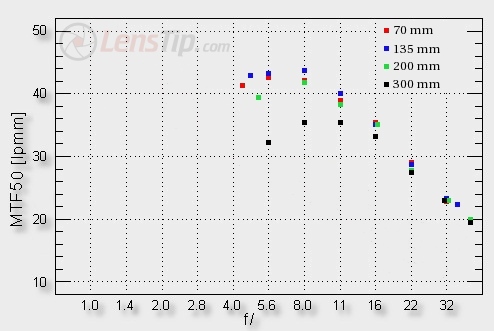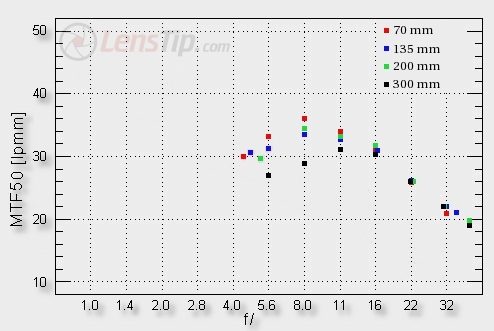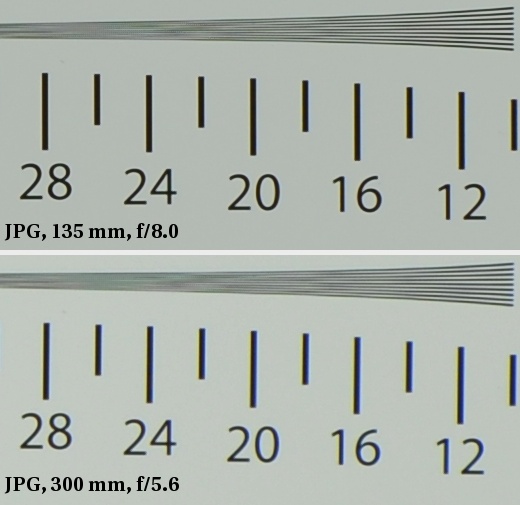Nikon Nikkor AF-S 70-300 mm f/4.5-5.6G IF-ED VR
4. Image resolution
Canon raised the standards very high indeed – will the Nikkor manage to perform better? Let’s look what the situation is in the frame centre. The graph below shows MTF50 function values based on RAW files from the Nikon D200.

Please Support UsIf you enjoy our reviews and articles, and you want us to continue our work please, support our website by donating through PayPal. The funds are going to be used for paying our editorial team, renting servers, and equipping our testing studio; only that way we will be able to continue providing you interesting content for free. |
- - - - - - - - - - - - - - - - - - - - - - - - - - - - - - - - - - - - - - - - - - - - - - - -
When you compare Canon to Nikon, it’s worth remembering that a Canon lens was tested on an 8 Mpix 20D sensor which makes its MTFs about 7-8% lower than those from the D200 camera.
Immediately we see a much better performance of the Nikkor at the maximum relative aperture. The Canon, in order to reach really excellent results, had to be stopped down a bit. The Nikkor, in the range from 70 to 200 mm, gets a sensational image quality even wide open. The big dimensions of the front element make themselves felt I suppose.
The Nikkor has one weak point, though – its result at 300 mm. In the case of the Canon you can hardly notice a difference between 300 mm and other focal lengths already from f/8, the Nikkor’s 300 mm lags behind significantly. A pity…
How does the Nikkor fare compared to the rival Sigma and Tamron lenses without stabilization? Unquestionably it wins. If you want to change your Sigma or Tamron instrument into a Nikkor and have been wondering whether it will bring you a better image quality we answer explicitly – yes, it will.
Let’s analyse the frame edge performance now which you can see depicted below.

Here the situation appears to be in reverse compared to that of the Canon’s 70-300 IS, which showed visible differences with the best performance at 135 mm and the worst at 300 mm. The Nikkor shows nice, similar and even graphs at all focal lengths although in no range it reaches such an excellent level as the Canon at 135 mm. Why? The answer you can find in the next chapter.
Additionally, it’s worth reminding that again the Nikkor fares better than independent producers’ products. At the very end we can have a peek how the situation looks on sharpened JPEG files. It’s worth remembering, though, that the standard settings of the D200 don’t sharpen JPEGs as strongly as e.g. a Canon 20D. Please do not consider JPEG files to be a reliable comparison source.
 |






